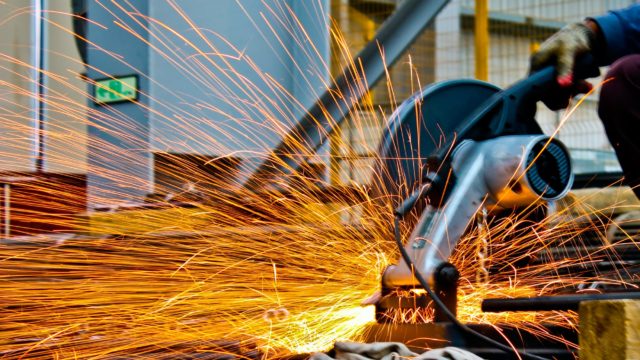
Steel has lots of uses: from construction and infrastructure to the electrical appliances in your home or workplace – and even the cutlery you use every day. These varied uses need different types of steel, because the steel used to build a bridge is completely different to that in your knives and forks.
But what are the different types of steel? What makes them different to each other? And what are they used for?
Four Types of Steel
There are four types of steel:
- Carbon steel
- Alloy steel
- Stainless steel
- Tool steel
And though they’re all made from iron and carbon, the alloys added to create the four types affect the grades of metal and result in the varied properties of different types of steel.
So what’s the difference between these four types of steel and their properties?
Carbon steel
What is carbon steel made of? Well, the clue’s in the name: carbon steel has a higher concentration of carbon than the other types of steel, which makes it strong and hard. There are three types of carbon steel:
- Low carbon steel
- Medium carbon steel
- High carbon steel
Low carbon steel is one of the most widely used groups of carbon steel, and it’s the type of steel used to make pipes, car body panels, and components used in construction, among other applications.
Is mild steel the same as carbon steel? Yes – in fact, low carbon steel is often referred to as mild steel.
Medium carbon steel is stronger than low carbon steel, and is more wear resistant and tough, but it’s much more difficult to form, weld and cut. Heat treating and adding alloys including chromium and nickel can make it harder. It’s used for train wheels, railway tracks and machinery parts.
High carbon steel is extremely hard and strong (though brittle if heat treated), is highly wear-resistant and has a low ductility because it’s often hardened and tempered. This means it’s difficult to bend, weld and cut, but because of its strength, it’s used for cutting tools, dies, and in construction.
Alloy steel
Though every steel is technically an alloy, alloy steel is a completely distinct type of steel. It’s so-called because it’s made by combining carbon steel with alloy elements including chromium (for hardness, increased toughness and wear resistance), manganese (for strain and shock resistance, and increased surface hardness), or nickel (for corrosion resistance, and increased strength and toughness).
Adding alloys – whether it’s just one or a few different alloys – changes the characteristic of the steel, making it harder, or more resistant to corrosion. That makes this type of steel perfect for use in construction materials like girders, flanges, bars and wires.
Stainless steel
Stainless steel is extremely resistant to corrosion, thanks to its high chromium content (typically between 10 and 20%). In fact, it’s around 200 times less likely to rust than mild steel, and is heat resistant too, which makes it a great choice for medical equipment, as well as kitchen utensils, cookware and cutlery. Take a look at some of the most common uses of stainless steel.
There are five groups of stainless steel, all developed using different techniques and treatments, and they all have their own properties and uses:
- Austenitic
- Ferric
- Martensitic
- Duplex
- Precipitation hardening
Tool steel
This is the last of the four types of steel and as you’d expect, tool steel is commonly used to make tools. That’s because it’s hard, abrasion and deformation resistant and stays sharp, even at high temperatures. This makes it very high quality steel.
There are six types of tool steel:
- Water hardening
- Cold working
- Shock resisting
- High speed
- Hot working
- Special purpose
Each contains varying amounts of elements like tungsten, molybdenum, cobalt and vanadium, which give the steel different properties including toughness and abrasion resistance, making it suitable for different applications.
We’re specialists in stainless steel: whether you’re a DIY hobbyist or require stainless steel for a large project, we can help. Contact us today.





